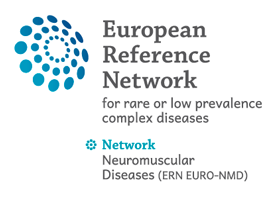24 Jul 6800
Disease duration and disability in dysfelinopathy can be described by muscle imaging using heatmaps and random forests
Authors:
David Gómez‐Andrés, Jorge Díaz, Francina Munell, Ángel Sánchez‐Montáñez, Irene Pulido‐Valdeolivas, Lionel Suazo, Cristián Garrido, Susana Quijano‐Roy, Jorge A. Bevilacqua
Introduction
The manner in which imaging patterns change over the disease course and with increasing disability in dysferlinopathy is not fully understood.
Methods
Fibroadipose infiltration of 61 muscles was scored based on whole‐body MRI of 33 patients with dysferlinopathy and represented in a heatmap. We trained random forests to predict disease duration, motor function measure dimension 1 (MFM‐D1) and modified Rankin scale (mRS) based on muscle scoring and selected the most important muscle for predictions.
Results
Heatmap delineates positive and negative fingerprints in dysferlinopathy. Disease duration is related to infiltration of infraspinatus, teres major‐minor and supraspinatus muscles. MFM‐D1 decreases with higher infiltration of teres major‐minor, triceps and sartorius. mRS is related to infiltration of vastus medialis, gracilis, infraspinatus and sartorius.
Discussion
Dysferlinopathy shows a recognizable muscle MRI pattern. Fibroadipose infiltration in specific muscles of the thigh and the upper limb appears to be an important marker for disease progression.

